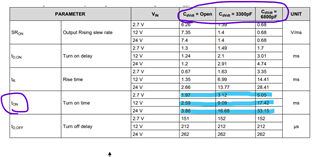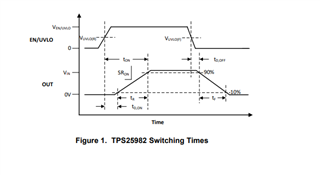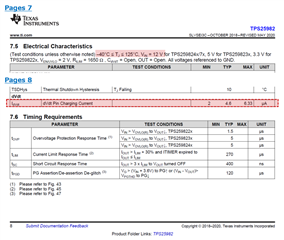Hi,
・Could you please tell me about the Output voltage ramp time, TdVdt in Table 8 (Page 31)?
①Is 20ms a typical value?
If it is a typical value, could you please tell me the maximum value?
②If the values of CL and RL change, will the value of 20ms also change?
Could you please let me know if there are any other elements that change the value?
③If the value changes depending on CL, RL, etc., could you please tell me the formula for calculating TdVdt?

Thanks.





